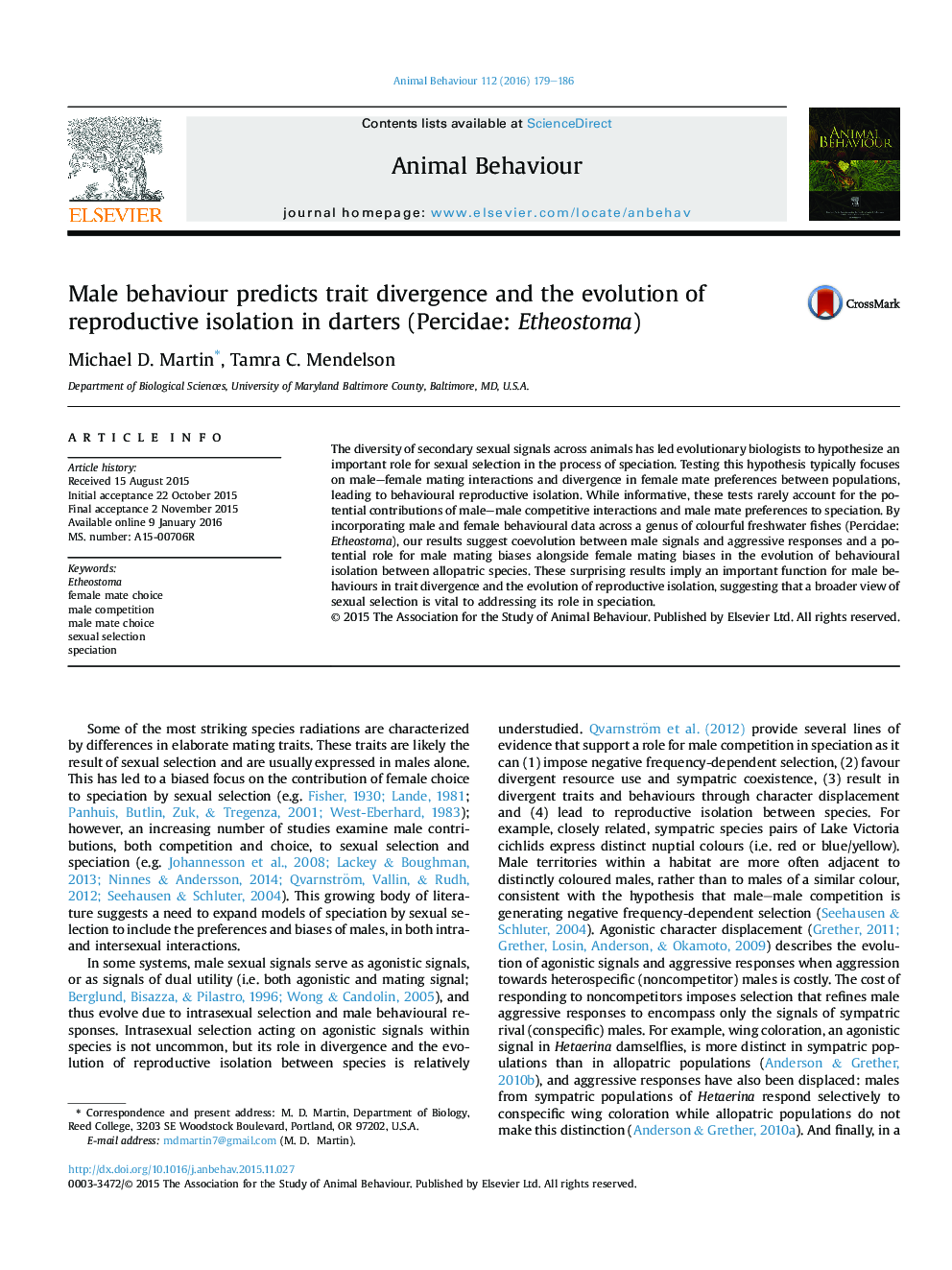| Article ID | Journal | Published Year | Pages | File Type |
|---|---|---|---|---|
| 8489322 | Animal Behaviour | 2016 | 8 Pages |
Abstract
The diversity of secondary sexual signals across animals has led evolutionary biologists to hypothesize an important role for sexual selection in the process of speciation. Testing this hypothesis typically focuses on male-female mating interactions and divergence in female mate preferences between populations, leading to behavioural reproductive isolation. While informative, these tests rarely account for the potential contributions of male-male competitive interactions and male mate preferences to speciation. By incorporating male and female behavioural data across a genus of colourful freshwater fishes (Percidae: Etheostoma), our results suggest coevolution between male signals and aggressive responses and a potential role for male mating biases alongside female mating biases in the evolution of behavioural isolation between allopatric species. These surprising results imply an important function for male behaviours in trait divergence and the evolution of reproductive isolation, suggesting that a broader view of sexual selection is vital to addressing its role in speciation.
Related Topics
Life Sciences
Agricultural and Biological Sciences
Animal Science and Zoology
Authors
Michael D. Martin, Tamra C. Mendelson,
